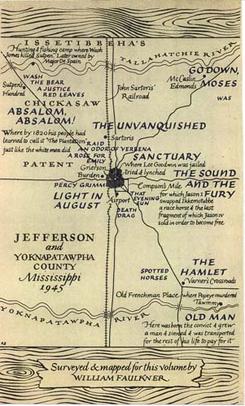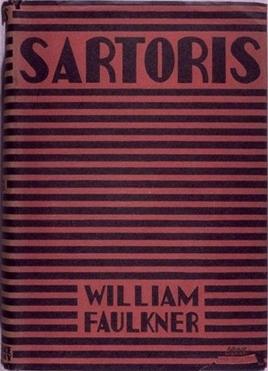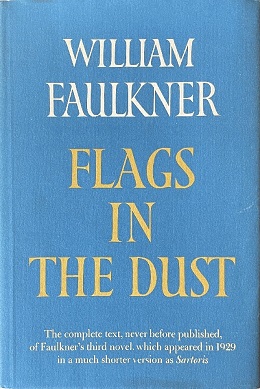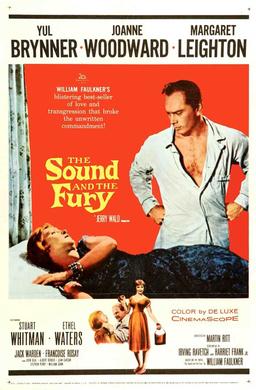
William Cuthbert Faulkner was an American writer. He is best known for his novels and short stories set in the fictional Yoknapatawpha County, Mississippi, a stand-in for Lafayette County where he spent most of his life. A Nobel laureate, Faulkner is one of the most celebrated writers of American literature and often is considered the greatest writer of Southern literature.

The Harvard Bridge is a steel haunched girder bridge carrying Massachusetts Avenue over the Charles River and connecting Back Bay, Boston with Cambridge, Massachusetts. It is the longest bridge over the Charles River at 2,164.8 feet.

The smoot is a nonstandard, humorous unit of length created as part of an MIT fraternity pledge to Lambda Chi Alpha by Oliver R. Smoot, who in October 1958 lay down repeatedly on the Harvard Bridge between Boston and Cambridge, Massachusetts, so that his fraternity brothers could use his height to measure the length of the bridge.

Absalom, Absalom! is a novel by the American author William Faulkner, first published in 1936. Taking place before, during, and after the American Civil War, it is a story about three families of the American South, with a focus on the life of Thomas Sutpen.

The Sound and the Fury is a novel by the American author William Faulkner. It employs several narrative styles, including stream of consciousness. Published in 1929, The Sound and the Fury was Faulkner's fourth novel, and was not immediately successful. In 1931, however, when Faulkner's sixth novel, Sanctuary, was published—a sensationalist story, which Faulkner later said was written only for money—The Sound and the Fury also became commercially successful, and Faulkner began to receive critical attention.

Yoknapatawpha County is a fictional Mississippi county created by the American author William Faulkner, largely based on and inspired by Lafayette County, Mississippi, and its county seat of Oxford. Faulkner often referred to Yoknapatawpha County as "my apocryphal county".
The Compson family is a fictional family created by American author William Faulkner for use in his novels and short stories. A once prominent family in Yoknapatawpha County, Mississippi, the family began to fall on hard times in the twentieth century. Principally depicted in The Sound and the Fury and in its appendix, they also make appearances in Absalom, Absalom! and stories such as "That Evening Sun". The family name is also referred to briefly in the opening chapter of Requiem for a Nun. Faulkner traced their genealogy from 1699 to 1945.

Sartoris is a novel, first published in 1929, by the American author William Faulkner. It portrays the decay of the Mississippi aristocracy following the social upheaval of the American Civil War. The 1929 edition is an abridged version of Faulkner's original work. The full text was published in 1973 as Flags in the Dust. Faulkner's great-grandfather William Clark Falkner, himself a colonel in the American Civil War, served as the model for Colonel John Sartoris. Faulkner also fashioned other characters in the book on local people from his hometown Oxford. His friend Ben Wasson was the model for Horace Benbow, while Faulkner's brother Murry served as the antetype for young Bayard Sartoris.

Absalom and Achitophel is a celebrated satirical poem by John Dryden, written in heroic couplets and first published in 1681. The poem tells the Biblical tale of the rebellion of Absalom against King David; in this context it is an allegory used to represent a story contemporary to Dryden, concerning King Charles II and the Exclusion Crisis (1679–1681). The poem also references the Popish Plot (1678).

Charles Eliot was an American landscape architect. Known for pioneering principles of regional planning, naturalistic systems approach to landscape architecture, and laying the groundwork for conservancies across the world. Instrumental in the formation of The Trustees of Reservations, the world's first land trust, playing a central role in shaping the Boston Metropolitan Park System, designing a number of public and private landscapes, and wrote prolifically on a variety of topics.
"That Evening Sun" is a short story by the American author William Faulkner, published in 1931 in the collection These 13, which included Faulkner's most anthologized story, "A Rose for Emily". The story was originally published, in a slightly different form, as "That Evening Sun Go Down" in The American Mercury in March of the same year.

Guy Lowell, was an American architect and landscape architect.
Quentin is a French masculine given name derived from the Latin first name Quintinus, a diminutive form of Quintus, which means "the fifth".

Flags in the Dust is a novel by the American author William Faulkner, completed in 1927. His publisher heavily edited the manuscript with Faulkner's reluctant consent, removing about 40,000 words in the process. That version was published as Sartoris in 1929. Faulkner's original manuscript of Flags in the Dust was published in 1973, and Sartoris was subsequently taken out of print.

Anderson Memorial Bridge connects Allston, a neighborhood of Boston, and Cambridge. The bridge stands on the site of the Great Bridge built in 1662, the first structure to span the Charles River. It brings Boston traffic into Harvard Square and was finished in 1915.

Soldiers Field Road is a major crosstown parkway in Boston, Massachusetts, running west to east from U.S. Route 20 in the northwest corner of Brighton to the Boston University Bridge. It follows the course of the Charles River and also passes by the campuses of Harvard University and Boston University. The road is named for the area south of the road on a bend in the Charles River. On June 5, 1890, Henry Lee Higginson presented Harvard College a gift of 31 acres of land, which he called Soldiers Field, given in honor of his friends who died in the Civil War: James Savage, Jr., Charles Russell Lowell, Edward Barry Dalton, Stephen George Perkins, James Jackson Lowell, and Robert Gould Shaw. This land later became the home of Harvard Crimson athletics.

The Sound and the Fury is a 1959 American drama film directed by Martin Ritt. It is loosely based on the 1929 novel of the same title by William Faulkner.

William Faulkner (1897—1962) was an American writer who won the 1949 Nobel Prize in Literature. He is best known for his novels and short stories set in the fictional Yoknapatawpha County, a stand-in for his hometown of Oxford in Lafayette County, Mississippi.
Saleh Hosseini is a retired professor of literature, translator and critic.

The Sound and the Fury is an American drama film directed by James Franco. It is the second film version of the 1929 novel of the same name by William Faulkner. The film stars Franco, Tim Blake Nelson, Scott Haze, Loretta Devine, Ahna O'Reilly, Joey King, Jacob Loeb, Janet Gretzky, Dwight Henry, Logan Marshall-Green, Jim Parrack, Seth Rogen, and Danny McBride.















